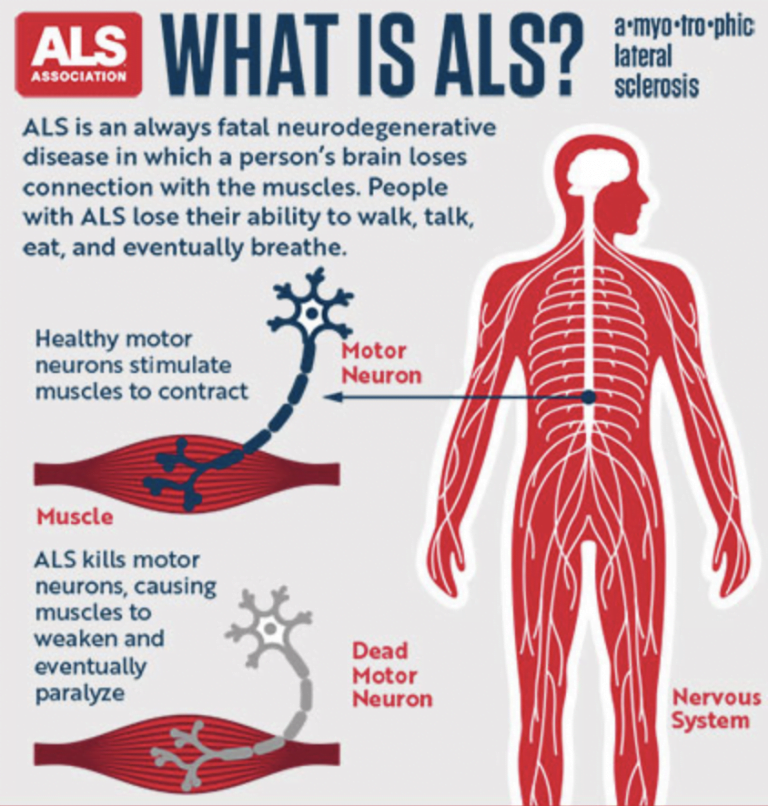Are Athletes More Prone To Als?

Amyotrophic Lateral Sclerosis (ALS), commonly known as Lou Gehrig's disease, is a progressive neurodegenerative condition that affects nerve cells in the brain and the spinal cord. The disease leads to the gradual loss of muscle control, resulting in severe physical disability. Given the intense physical demands placed on athletes, questions arise about whether they are more susceptible to ALS compared to the general population. This article explores the relationship between athleticism and the risk of developing ALS, examining research findings, expert opinions, and potential underlying factors.
Quick Info Table: ALS Overview
| Feature | Description |
|---|---|
| Disease Type | Neurodegenerative |
| Common Symptoms | Muscle weakness, speech difficulties, and paralysis |
| Average Age of Onset | 55-75 years |
| Life Expectancy | 3-5 years post-diagnosis |
| Known Risk Factors | Age, family history, and potentially, athleticism |
Understanding ALS
What is ALS?
Amyotrophic Lateral Sclerosis is characterized by the degeneration of motor neurons, which are responsible for transmitting signals from the brain to the muscles. As these neurons die, the muscles weaken and atrophy, leading to a variety of symptoms, including difficulty in speaking, swallowing, and breathing. The exact cause of ALS remains unknown, although researchers have identified both genetic and environmental factors that may play a role.
Symptoms and Diagnosis
Early symptoms of ALS can be subtle and may include muscle twitches or cramps, weakness in the hands or legs, and difficulty with fine motor skills. As the disease progresses, patients may experience increased muscle weakness, leading to significant challenges in daily activities. Diagnosis typically involves neurological examinations, electromyography (EMG), and ruling out other conditions.
The Athletic Connection
Are Athletes More Prone to ALS?
Research has shown mixed results when investigating the relationship between athleticism and the incidence of ALS. Some studies suggest that athletes, particularly those involved in contact sports, may have a higher risk of developing ALS. For example, a study published in the journal Neurology found that professional football players were more likely to be diagnosed with ALS than the general population.
However, it is crucial to note that while some studies indicate a potential link, others have not found a definitive correlation. This inconsistency has led to ongoing debate within the scientific community.
Potential Explanations for Increased Risk
-
Traumatic Brain Injury (TBI): Athletes in contact sports often experience repeated head injuries, which could contribute to neurodegenerative diseases. Studies have indicated that individuals with a history of TBI may have a higher risk for ALS and other neurological disorders.
-
Genetic Factors: Certain genetic predispositions may make some individuals more susceptible to both athleticism and ALS. For instance, variations in genes involved in muscle function and repair might create a pathway for increased risk among athletes.
-
Environmental Exposures: Athletes may be exposed to various environmental toxins, particularly in sports with high physical exertion. These toxins could potentially contribute to the onset of ALS, necessitating further research into the role of environmental factors.
Research Findings
Several studies have sought to clarify the relationship between athletes and ALS:
- A 2014 study examined the incidence of ALS among former NFL players and found a notable increase in ALS cases compared to the general population.
- Conversely, a comprehensive review of studies published in Frontiers in Neurology suggested that while some sports may show increased risk, others do not, indicating that further investigation is warranted.
Expert Opinions
Experts in the field of neurology have varying views on the connection between athleticism and ALS. Dr. Michael Swash, a prominent neurologist, emphasizes the need for more data to understand the potential link. He notes that while some athletes may show an increased risk, it is essential to consider other factors, such as family history and environmental influences.
On the other hand, Dr. Jonathan Glass, an ALS researcher, points out that while contact sports may pose a risk, not all athletes are affected. He advocates for more targeted research to identify specific risk factors that could lead to preventative measures.
Alternative Perspectives
While some studies suggest a link between athletes and ALS, it is vital to acknowledge counterarguments. Numerous athletes remain healthy throughout their lives, and many individuals diagnosed with ALS have no history of athleticism. This highlights that ALS can affect anyone, regardless of their physical background.
Furthermore, some researchers argue that the increased awareness of ALS in athletes may lead to a perception bias. As high-profile cases of ALS among athletes come to light, it may seem as though there is a larger connection than truly exists.
Conclusion
In summary, the question of whether athletes are more prone to ALS remains complex and nuanced. While some research indicates an increased risk, particularly among contact sports athletes, other studies do not establish a clear correlation. Factors such as traumatic brain injury, genetic predispositions, and environmental exposures may play a role, but more extensive research is needed to draw definitive conclusions.
As we continue to explore the intricacies of ALS, it is essential to stay informed about the latest findings and maintain a balanced view of the connection between athletics and this debilitating disease. For athletes and non-athletes alike, understanding the risk factors and symptoms of ALS can lead to earlier diagnosis and potentially better outcomes. The ongoing dialogue within the scientific community will hopefully shed more light on this critical issue, paving the way for preventative strategies and improved care for individuals affected by ALS.



Comments ()